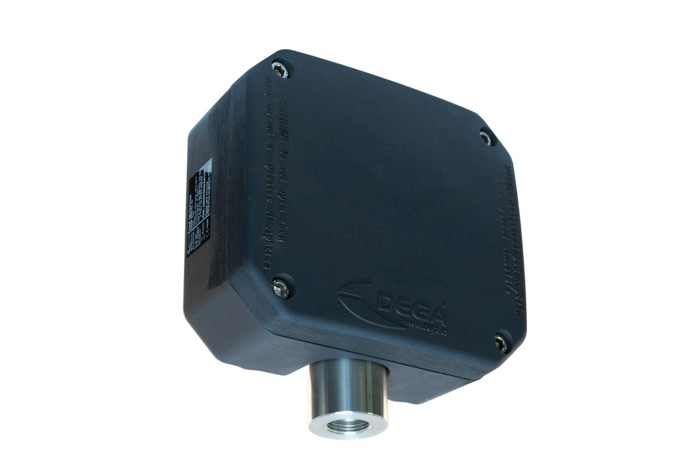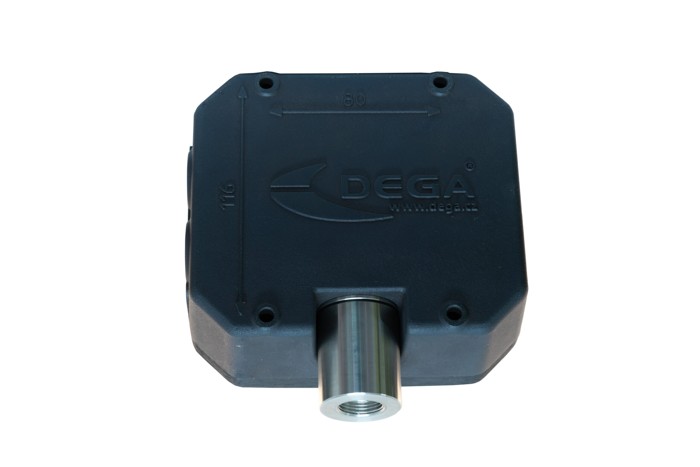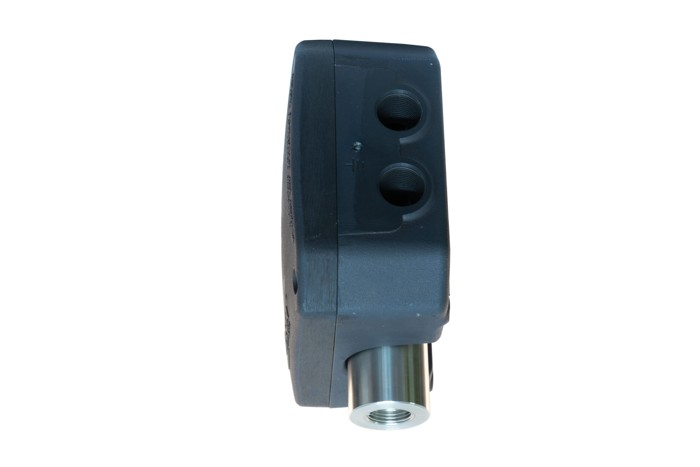DEGA NS lll
Gas Detection Transmitter
Conductor
catalytic, electrochemical, infrared, (PID), semiconductor
Sound
Sound signalisation
Output
4-20 mA output, RS485 (Modbus)
Gases
Detection of toxic and explosive gases, including oxygen
Certification
Certification for explosive atmospheres
Protection
Protection IP 54/IP 66 (with cover)
The DEGA NB III sensor is part of the gas detection system. It is located in the monitored area where a critical concentration of flammable or toxic substances can develop. The sensor converts the measured concentration into a unified current signal of 4-20 mA and RS485 (Modbus). The sensor can be connected to the evaluation centers DEGA UPA III, DEGA UKA III and DEGA UDA III.
Basic gas detection methods:
CL – catalytic sensor (Pelistor)
They work on the principle of catalytic combustion – the gas concentration is measured based on the amount of heat released during the controlled combustion reaction. The reaction is supported by a suitable temperature and the presence of a catalyst. These sensors can be used to detect a wide range of flammable gases. The sensors are characterized by a fast response. They require at least 10% oxygen in the air for their proper function.
EL – electrochemical sensor
They work on the principle of changing the electrical parameters of the electrodes placed in the electrolyte as a result of the oxidation or reduction reaction of the detected gas on their surface. These sensors show good selectivity and ability to detect very low concentrations of toxic gases.
IL – infrared sensor
The highest quality sensing method. They work on the principle of infrared spectroscopy. The sensors have excellent selectivity for organic substances, do not need any oxygen content in the atmosphere for their operation and are resistant to catalytic poisons (sulphur and silicon compounds) that cause a change in the sensitivity of catalytic sensors. They are also characterized by great stability and a long service life.
SL – semiconductor sensor
They work on the principle of changing the electrical conductivity of the semiconductor when the concentration of the detected gas changes. The advantage is their long service life when working in a clean environment and a wide range for various types of gases and vapors. The disadvantage is low selectivity – the sensor reacts to a large extent even to gases for which it is not calibrated.
PID – photoionization sensor
A sensitive sensing method to detect a wide range of VOCs – volatile organic substances. The sensor non-selectively detects all VOCs in the air already at concentrations in ppm units.
| Power voltage | 24 VDC |
| Exit | 4 – 20 mA RS485 (DEGA protocol) |
| Degree of protection by the cover | IP 54 |
| Power consumption | 1.2W |
| Dimensions | 100 x 110 x 40 mm (WxHxD) |
| Mass | 0.3 kg |
| Sensor type | catalytic, electrochemical, infrared, photoionization, semiconductor |
| Estimated sensor lifetime in the sensor in a clean environment | catalytic/semiconductor (1-2 years), electrochemical (1-3 years), infrared (5 years and more), photoionization (5000 hours) |
| Relative humidity of the surrounding air | 0-95% RH |
| Working environment | BE1 – non-explosive environment |
The sensor can be connected to the evaluation centers DEGA UPA III, DEGA UKA III and DEGA UDA III.
Module:
- DEGA NB III RS485 (internal RS485 output)
Accessories:
- DEGA NB III mechanical cover
- DEGA NB III stainless steel cover 316
- DEGA GAS INLET NB III (calibration attachment)
- DEGA WATER CAP
- DEGA FUNNEL
- DEGA NB III SU (replacement sensor unit)



